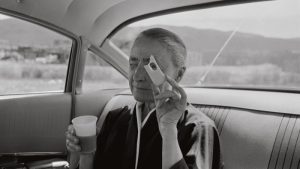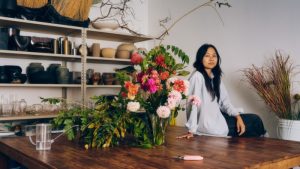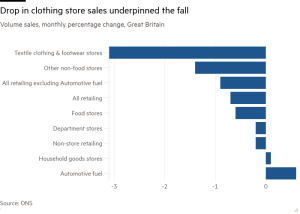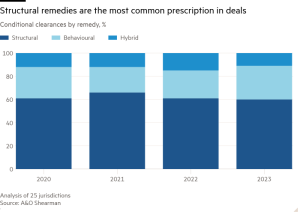Shhhhh! The stealth-wealth brand Loro Piana is celebrating 100 years
Despite having no obvious branding or showy colours, the Loro Piana look is distinctive. Damien Bertrand, Loro Piana’s CEO, is a case in point: sitting in his office in the brand’s headquarters – a historic palazzo in central Milan – he’s dressed in head-to-toe navy, wearing a long-sleeved polo knit, slim-fit trousers and a pair of the brand’s minimal Summer Walk loafers. The look is relaxed, easy, yet unassumingly rich; a look that, with the help of shows such as Succession, is now widely understood to be emblematic of the Loro Piana brand. You may recognise it via Gwyneth Paltrow, who wore Loro Piana in court last year, or on David Beckham and Oprah Winfrey. Its unbranded, rubber-soled Walk slip-ons have become a quiet signifier among tech billionaires and art dealers alike.
“We are not about logos, we are not about branding – we are discreet,” says Bertrand, a 51-year-old Frenchman who joined Loro Piana three years ago after spending five years at Dior. The house now has 145 standalone stores and concessions worldwide, including 29 in mainland China. Its owner LVMH does not reveal individual sales earnings for its brands, but recent reports have put annual revenues at around €1bn.
“Our first signature is the touch,” adds Bertrand, pinching his shirt between his fingers. “And when you think about it, we are probably the only maison that has that – you recognise the touch of Loro Piana cashmere.”

This tactility is a trait the brand has been cultivating for a century. Its autumn‑winter collection, the largest yet, will highlight the breadth and depth of its material sourcing. A Harrods takeover in November will see a full transformation of the store, including its façade, celebrating the “chain of hands” that feed into it. “We thought the 100-year anniversary was a good opportunity to celebrate the story of the family and the story of what we do,” says Bertrand, who is the main spokesperson for the brand (it has never had a creative director, and has no imminent plans to install one).
Loro Piana was founded as a wool trader in 1924 in Quarona, in the Italian region of Piedmont, by the engineer Pietro Loro Piana. He came from a family of merchants whose quest was “exploring the world for the most precious raw materials, and engineering them into beautiful garments”, says Bertrand. In the 1960s, under Pietro’s grandson Franco Loro Piana, the company started producing fabric, exporting throughout Europe, America and Japan. In the 1980s, the next generation, brothers Sergio and Pier Luigi Loro Piana, began producing ready-to-wear.

In 2013, LVMH bought an 80 per cent stake in the company for €2.57bn, in a year when sales were expected to be €700mn. Since then, Loro Piana – which was a successful yet slightly old-fashioned heritage brand – has undergone a major repositioning, with collaborations with Japanese streetwear artist Hiroshi Fujiwara and New Balance, as well as more buzzy releases, including loungewear capsules and its trademarked CashDenim – an ultra-luxury line of jeans (starting at £1,080).
“I’ve been aware of Loro Piana for a very long time, somewhat like an Alpinist is aware of a distant mountain peak,” says Jeremy Strong, who played Succession scion Kendall Roy and is now a brand ambassador. He first bought Loro Piana in his 30s, when he started making a living as an actor. “They were clothes that I wished to have and would sometimes save up for a single sweater and then live in it.”

Loro Piana cashmere/silk Soft Cloud scarf, £1,080, at Loro Piana Special Products for Harrods

Loro Piana leather Loom L32 bag, £3,775, at Loro Piana Special Products for Harrods

Loro Piana wool Wish ankle boots, £840, at Loro Piana Special Products for Harrods

Loro Piana leather and cotton Clove beanie, £495, at Loro Piana Special Products for Harrods
The anniversary year has not been without its hitches. A report by Bloomberg in March this year called into question the brand’s labour practices in Peru, where it sources its vicuña, and highlighted the disparity between luxury price tags and the amount paid for the raw materials. At the time, the president of the Lucanas peasant community defended its relationship with the brand, saying it relies on its business, while Loro Piana said it “represents a key economic support locally, protecting and fortifying the demand and the value of the vicuña fibre, regardless of market dynamics”.
“What has been written didn’t correspond to the reality and to our commitment in Peru for the past 30 years,” says Bertrand, “so we officially refuted it, saying that [the report] was full of misinterpretation and inaccuracies…We believe [we] are positive for the people, for the economy, and for the animals also. My point of view is we will continue to do [business], and we will do more, in terms of social, in terms of education, in terms of health.”

Bertrand says the vicuña scandal has not impacted sales. And the analysts agree. “My understanding is that Loro Piana is doing very well,” says Erwan Rambourg, global head of consumer and retail research at HSBC. “Clearly, these are tough times for luxury, but the higher end has been a lot more resilient. Brands like Loro Piana, Brunello Cucinelli, Hermès and, to a certain extent, Zegna, where you get the sense that you’re paying more, but hopefully the product is longer-lasting and not really seasonal in nature. I think they’re at the right place right now.”
Loro Piana is continuing to push its material and sourcing messaging: its latest releases are products made with undyed dark merino wool, called Pecora Nera, which is sourced from a farm in New Zealand, as well as Cheviot, a historic wool from Scotland. Bertrand is also enthusiastic about the brand’s annual Record Bale competition, which started in 1997 and awards farms for producing ever-finer wool. The current world record, set in 2023, measures 10.2 microns (by comparison, the average human hair is around 50 to 70 microns), and feels as soft as candyfloss. The brand uses these bales for custom orders for its top spenders. Says Bertrand: “We can only do about 50 to 60 jackets or suits with this.”
The brand is also developing other categories, including jewellery, handbags and interiors. Yet Bertrand insists that Loro Piana will never be a “fashion” brand. “We don’t do products according to the latest trends,” he says. “What we do are products that have the highest quality and that you can keep for your whole life. We do investment pieces.” Adds Rambourg: “The touch and feel and quality is not just perceived, it’s real.”
Models, Aliza Jarmon at Elite and Raffaele Giolli at Lis Rutten. Casting, Ben Grimes at Drive Represents. Hair, Kei Terada at Julian Watson Agency using Balmain. Make-up, Lynski. Photographer’s assistant, Ariel Mihaly. Stylist’s assistants, Emiline Tavern and Grayce Cooper. Production, Parent
#Shhhhh #stealthwealth #brand #Loro #Piana #celebrating #years






